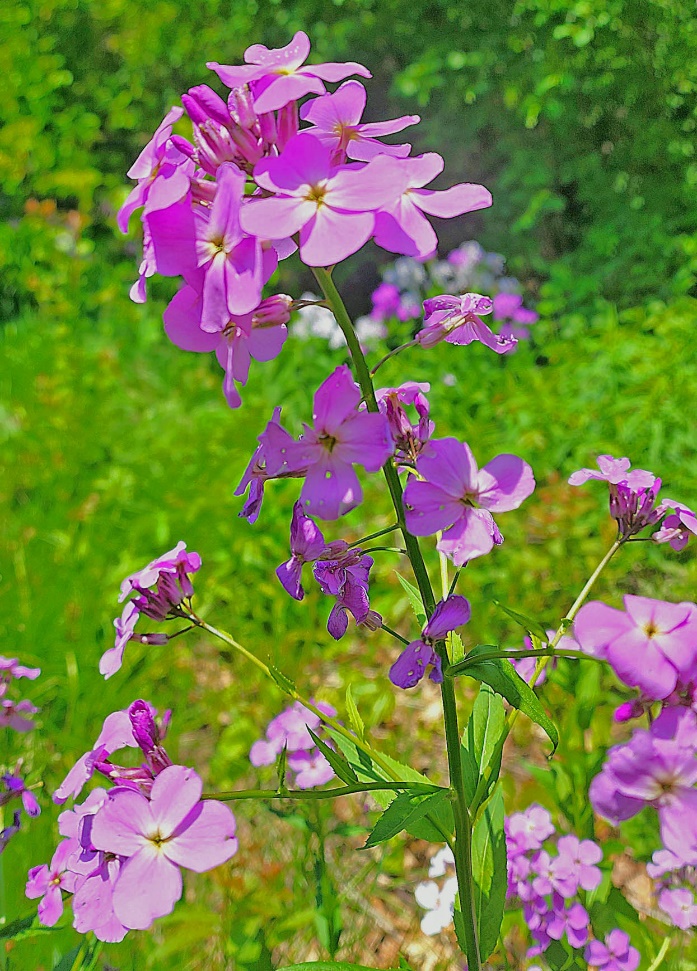
Rural Perspectives: Dame’s rocket can bloom off and on all summer
by Diane Constable

country roads and field edges. It is a member
of the mustard family. Photo credit Diane Constable
Dame’s rocket (Hesperis matronalis) is a non-native plant that belongs to the mustard family and can be found along our country roads and field edges. Other common names are sweet rocket, dame’s violet, and mother-of-the-evening.
It is a biannual plant that grows in a small mound the first year. The second year it grows 2 to 4 feet tall. The flowers are light to dark shades of lavender. They start blooming in May and bloom off and on all summer. Each plant can produce up to 2,000 seeds. These flowers resemble our native phlox, but have four petals where the phlox blooms have five petals.
Originally from the Mediterranean region of Europe, settlers to this country brought seeds over for their flower gardens as early as the 1600s. They were used as an ornamental plant and for cut flowers. The young leaves were eaten sparingly in salads and sprouted seeds mixed with vinegar were used to combat freckles.
Today, the seed oil is used in the manufacturing of perfumes, and it continues to be a hardy garden plant, although some states list it as an invasive because it can crowd out native wildflowers.
Hummingbirds, bees, butterflies and moths feed on the nectar, and some caterpillars use the plant for food.
Fun Fact: Because the flower has little scent during the day but becomes quite fragrant toward evening, it also is called “the flower of deceit.”

As an avid photographer, Diane Constable regularly puts her formal education in both nature and photography to good use. Diane also enjoys gardening and her dogs and serves on the board of the Ann Arbor Dog Training Club.



